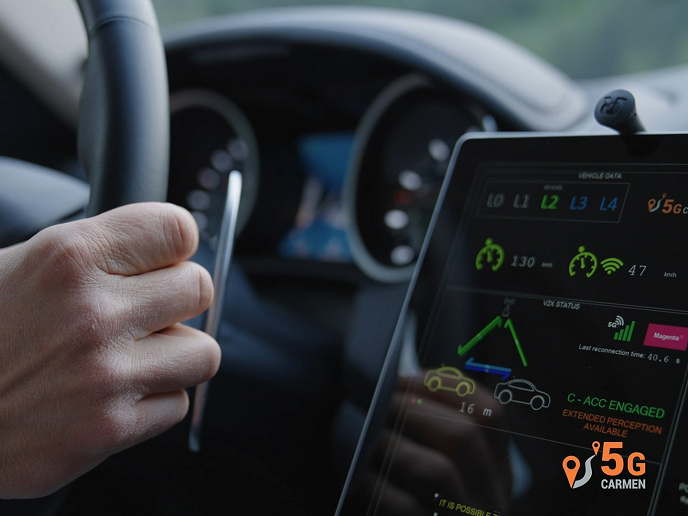Moving into high gear: automated driving across national borders
Fully automated and driverless vehicles may be decades away, but mixed traffic environments with vehicles of varying automation levels are on the horizon. They promise a huge reduction in traffic-related deaths, lower emissions, less congestion and a ‘sweeter’ ride. Europe is ahead of most of the world when it comes to connected and automated mobility (CAM). The EU established the legal framework for automated and fully driverless vehicles’ approval in July 2022, which also introduced mandatory advanced driver assistance systems. As if on cue, also in July 2022, the ambitious EU-funded 5G-CARMEN(opens in new window) project completed its holistic demonstration of advanced driver assistance systems and seamless cross-border communication. The activities took place throughout the 5G-enabled corridor 5G-CARMEN built, spanning 600 km of roads connecting three European countries.
5G is essential to mission-critical connected and automated mobility
In current European cellular networks, connections while roaming in other countries are typically routed back to the home network. The longer communication paths result in longer time for transporting and processing driving-critical information. 5G-CARMEN extended the existing commercial 4G networks and ongoing roll-out of 5G to provide continuous 5G network coverage between Germany and Austria and between Austria and Italy along the Munich-Bologna corridor. According to Edwin Fischer of Deutsche Telekom(opens in new window) and 5G-CARMEN technical manager: “5G-CARMEN implemented measures for fast 5G network reselection between the three commercial 5G networks at the borders. This enabled controlled network selection during border transit and a connectivity interruption of only 2-4 seconds compared to tens of seconds or even minutes in standard roaming scenarios.”
Mobile edge computing enables seamless roaming
The project implemented regional mobile edge computing (MEC) data centres with respective local/regional breakout of the cellular connections in the three networks. This enabled demanding, centralised assisted manoeuvring (in-lane, lane change and centralised lane merging) based on cellular vehicle-to-everything(opens in new window) that connects vehicles to one another and to the transport infrastructure. “5G-CARMEN implemented and tested its CAM services in mixed traffic conditions. The MEC-based services operated in an orchestrated edge cloud(opens in new window) environment across borders, enabling seamless CAM service roaming,” adds Fischer. “Orchestrating the services ‘from edge to edge’ provided 5G CAM service continuity across MEC and network environments of different mobile network operators,” explains Fischer.
Changing lanes, accelerating to the finish line
All this would not have been possible without reprioritisation following the midterm discussion. Originally focused on green driving CAM use cases and rear-seat infotainment services, the project switched gears midway. It focused on demanding, enhanced manoeuvring services, adding the complex centralised lane merging service that was completed and successfully implemented. Collaboration with the 5GCroCo and 5G MOBIX projects strengthened the promotion of 5G for CAM at high profile conferences and congresses to energise the scientific community and the public. “5G-CARMEN showed that 5G is essential to mission-critical CAM services, even in its current state of combination with 4G network elements. Further, it demonstrated that this is already possible in commercial 5G networks, not only in bespoke test networks, and that significant improvements to the roaming regime across Europe are possible now,” concludes Fischer. 5G-CARMEN has shown us the way to safer, greener and intelligent transport and has paved the way for implementation of 5G corridors for CAM services across Europe.







